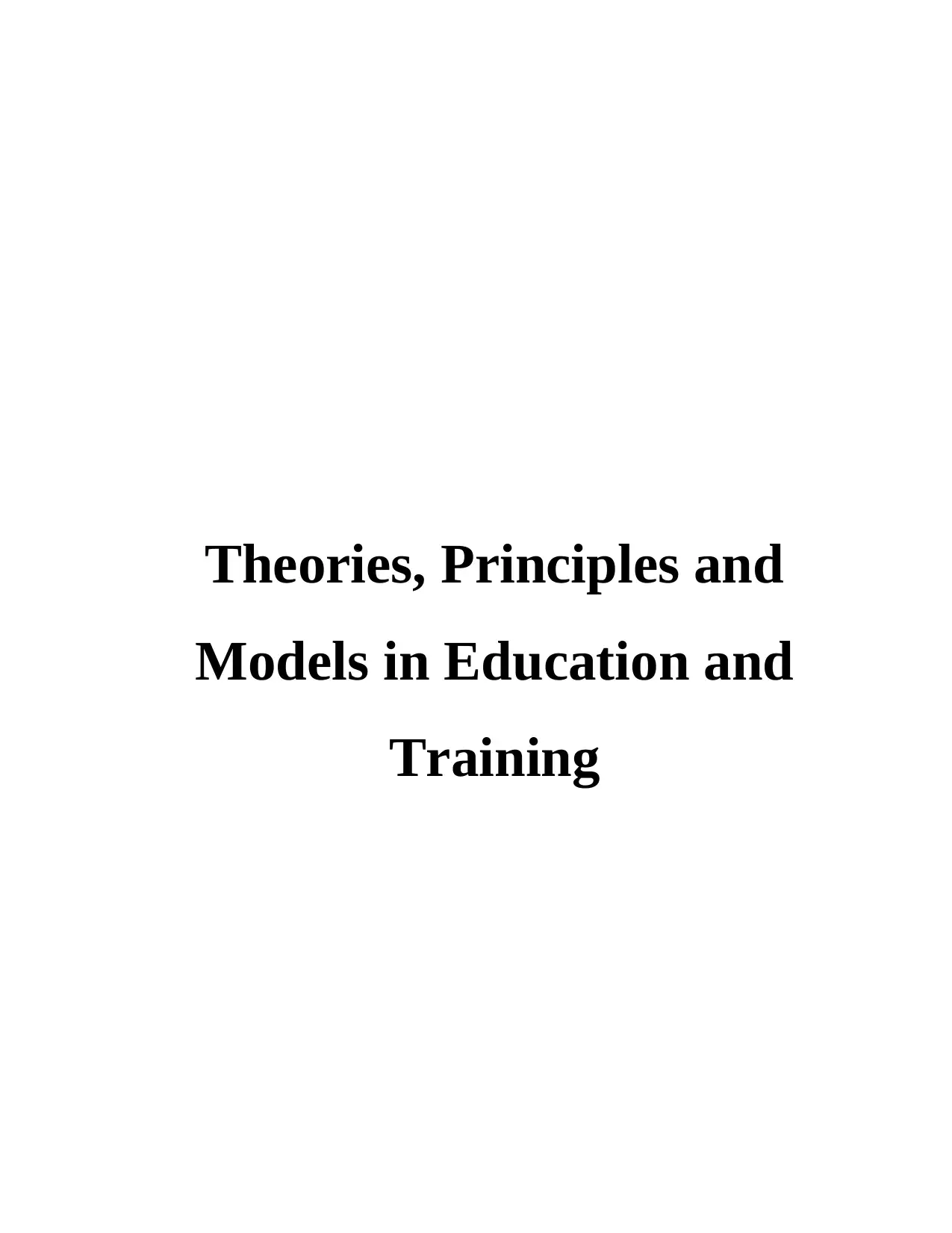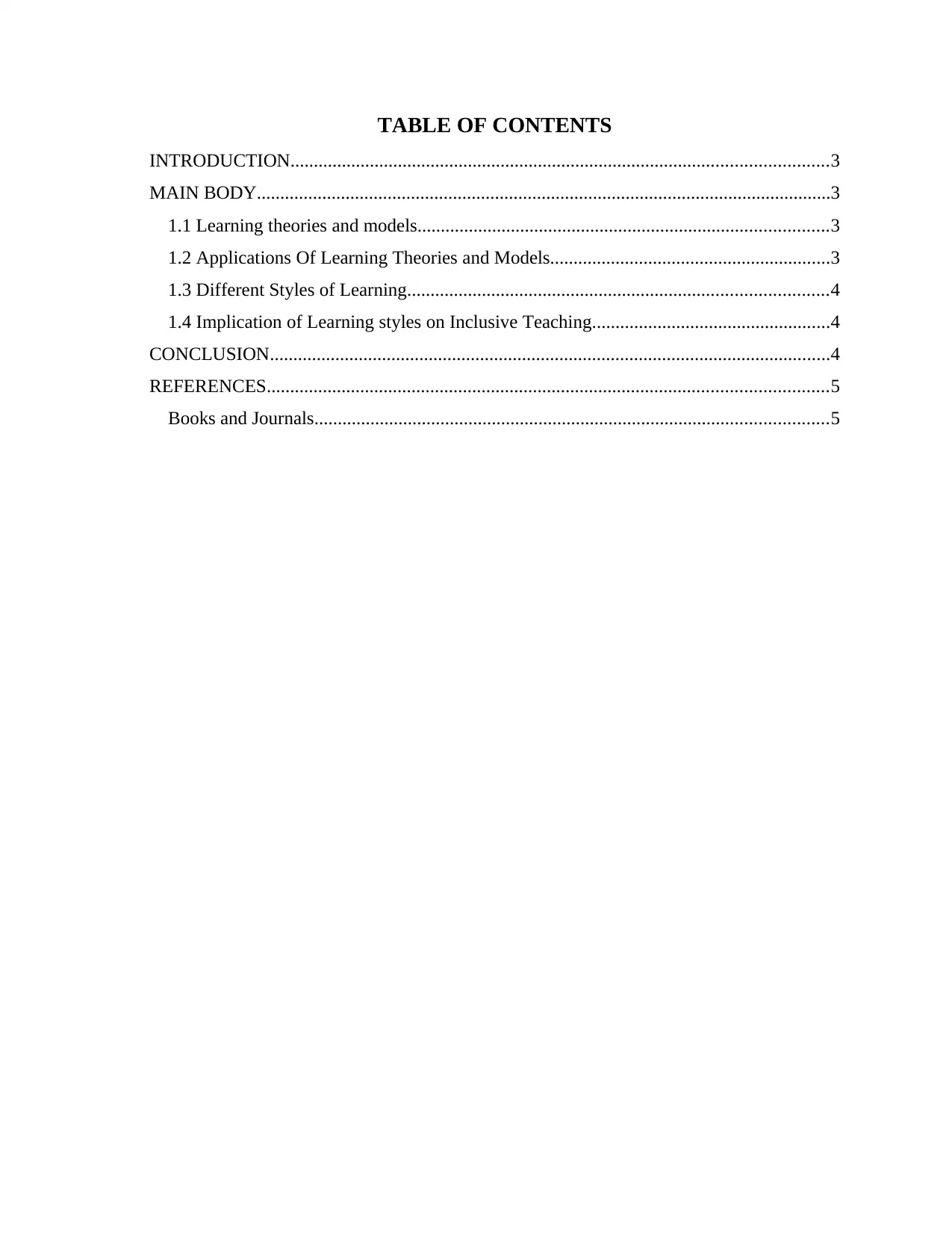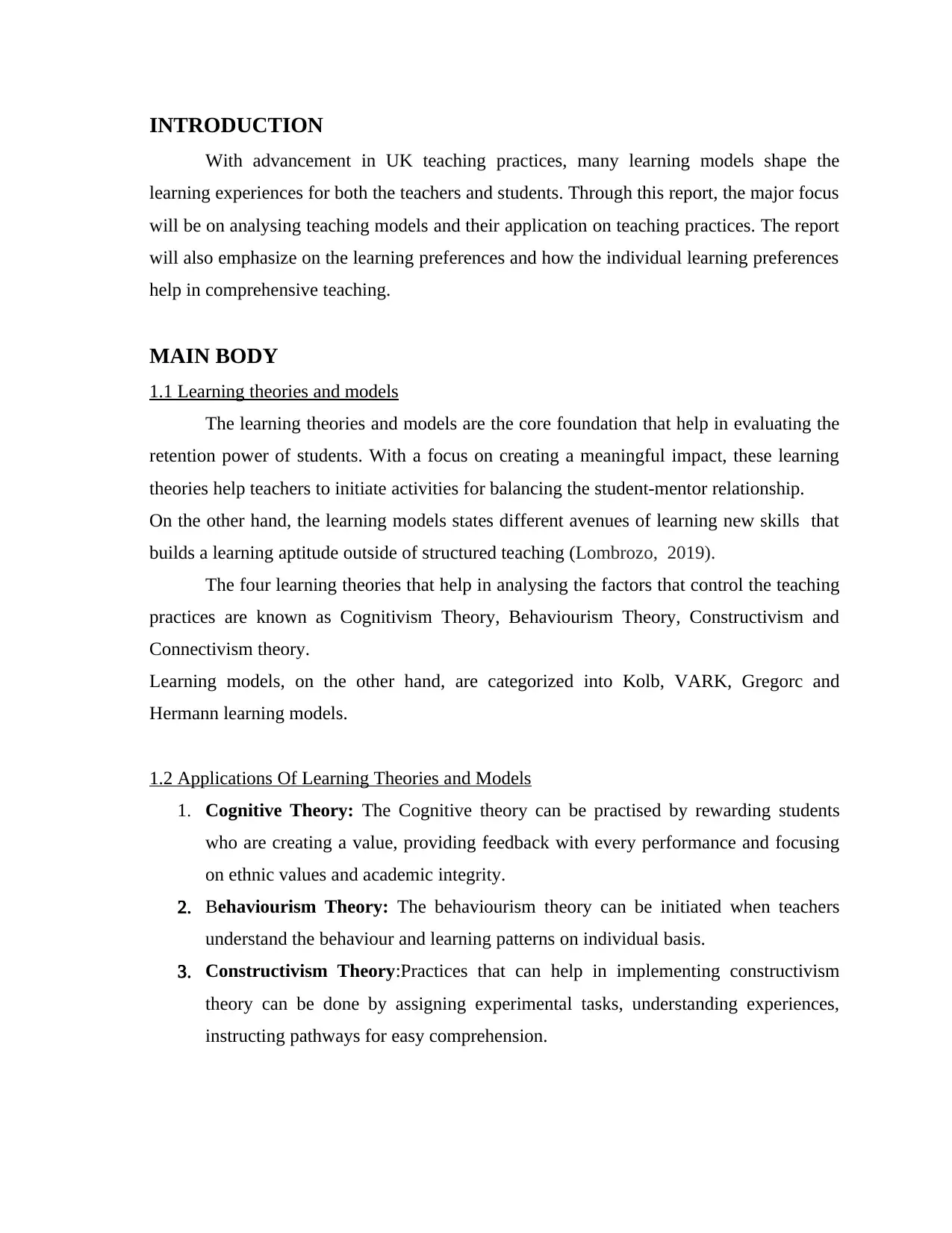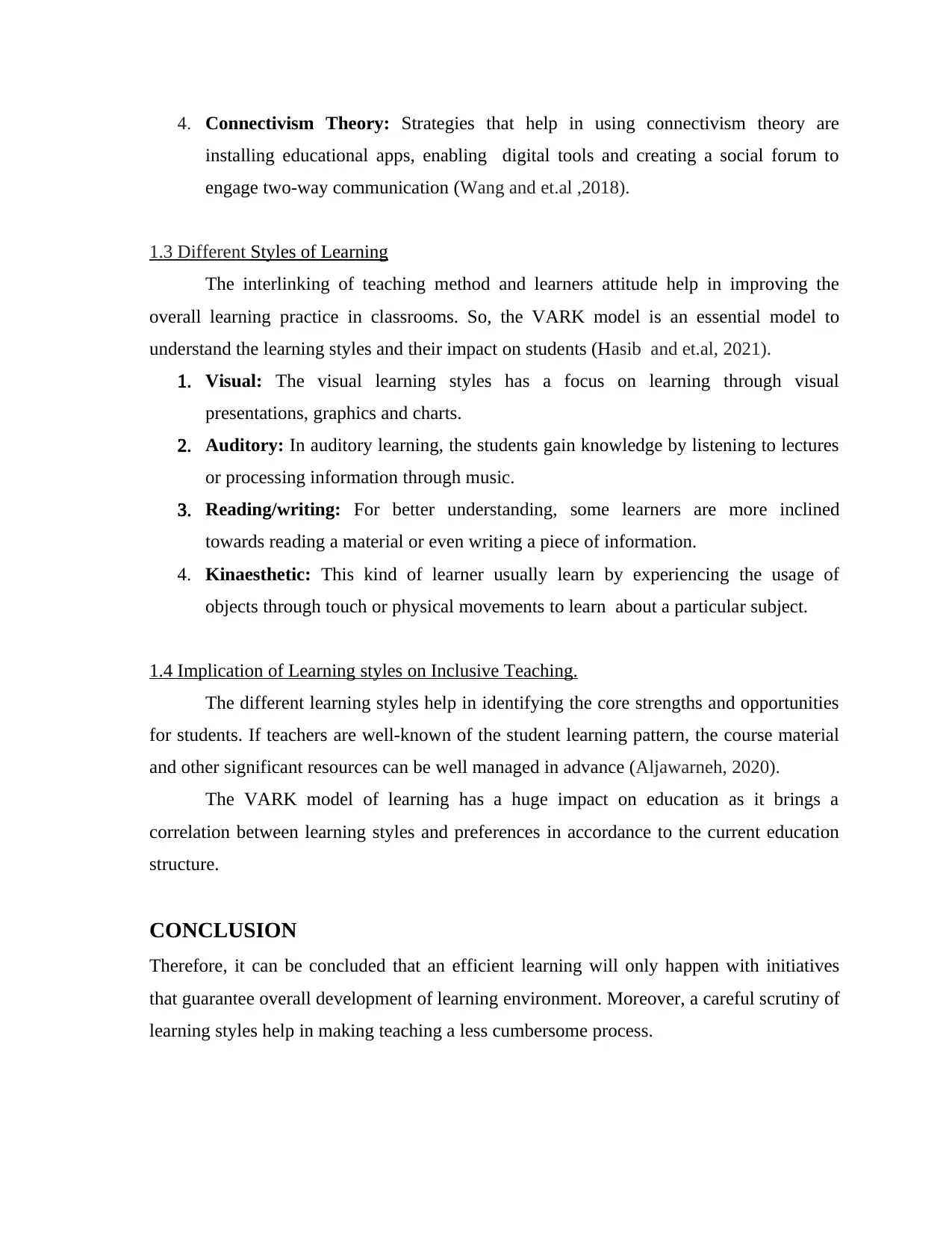A Comprehensive Report on Theories, Principles, Models in Education
VerifiedAdded on 2023/06/17
|5
|787
|79
Report
AI Summary
This report provides an analysis of learning theories and models and their application in education and training. It focuses on various teaching models and their impact on teaching practices, emphasizing the significance of learning preferences and how they contribute to comprehensive teaching. The report discusses core learning theories such as Cognitivism, Behaviorism, Constructivism, and Connectivism, alongside learning models like Kolb, VARK, Gregorc, and Hermann. It highlights the application of these theories in practice, such as rewarding students, providing feedback, understanding individual learning patterns, assigning experimental tasks, and utilizing digital tools for engagement. The report also explores different learning styles—Visual, Auditory, Reading/Writing, and Kinesthetic—and their implications for inclusive teaching, emphasizing how understanding these styles can enhance the learning environment. The VARK model's impact on education is noted, correlating learning styles with preferences within the current educational structure, ultimately concluding that effective learning requires initiatives that ensure the overall development of the learning environment and careful consideration of individual learning styles.
1 out of 5











![[object Object]](/_next/static/media/star-bottom.7253800d.svg)